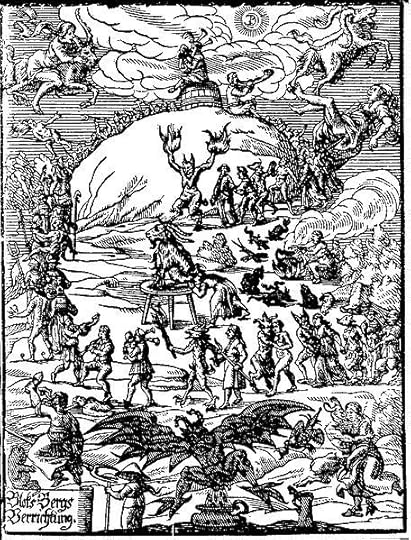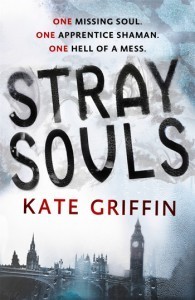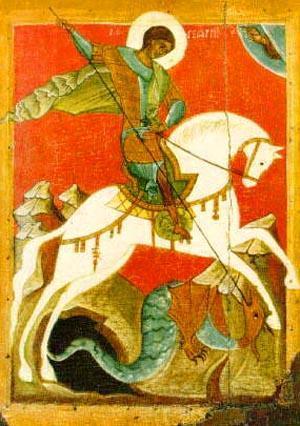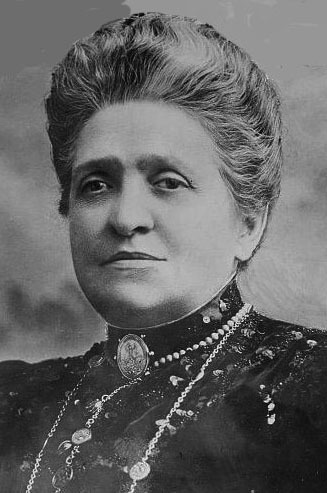Stephen Morris's Blog, page 48
April 30, 2014
Walpurgis Night (April 30)

Title illustration of Johannes Praetorius (writer) (de)’ Blocksbergs Verrichtung (1668) depicts the witches’ festival and worship of the Devil commonly imagined to be celebrated on Walpurgis Night.
The current festival is, in most countries that celebrate it, named after the English missionary Saint Walpurga (ca. 710–777/9). As Walpurga was canonized on 1 May (ca. 870), she became associated with Beltane/May Day. The eve of May Day, traditionally celebrated with dancing, came to be known as Walpurgisnacht (“Walpurga’s night”). The name of the holiday is Walpurgisnacht in German and Dutch, Valborgsmässoafton in Swedish, Vappen in Finland Swedish, Vappu in Finnish, Volbriöö, (Walpurgi-öö) in Estonian, Valpurgijos naktis in Lithuanian, Valpurģu nakts or Valpurģi in Latvian, čarodějnice and Valpuržina noc in Czech.
The German term is recorded in 1668 by Johannes Praetorius (writer) as S. Walpurgis Nacht or S. Walpurgis Abend. An earlier mention of Walpurgis and S. Walpurgis Abend is in the 1603 edition of the Calendarium perpetuum of Johann Coler, who also refers to the following day, 1 May, as Jacobi Philippi, feast day of the apostles James the Less and Philip in the Catholic calendar.
The 17th century German tradition of a meeting of sorcerers and witches on May Day is influenced by the descriptions of Witches’ Sabbaths in 15th and 16th century literature.
In Bohemia (known today as the Czech Republic), Walpurgis Night is pálení čarodějnic (“burning of the witches”) or simply čarodějnice (“the witches”) and is the day when winter is ceremonially brought to the end by the burning of rag and straw witches or just broomsticks on bonfires around the country. The festival offers Czechs the chance to eat, drink and be merry around a roaring fire.
In Estonia, Volbriöö is celebrated throughout the night of 30 April and into the early hours of 1 May, where May Day is a public holiday called “Spring Day” (Kevadpüha). Volbriöö is an important and widespread celebration of the arrival of spring in the country. Influenced by German culture, the night originally stood for the gathering and meeting of witches. Modern people still dress up as witches to wander the streets in a carnival-like mood.
From Bram Stoker’s short story, “Dracula’s Guest,” an Englishman (whose name is never mentioned) is on a visit to Munich before leaving for Transylvania. It is Walpurgis Night, and in spite of the hotelier’s warning not to be late coming back, the young man later leaves his carriage and wanders toward the direction of an abandoned “unholy” village. As the carriage departs with the frightened and superstitious driver, a tall and thin stranger scares the horses at the crest of a hill.
In some parts of northern coastal regions of Germany, the custom of lighting huge fires is still kept alive to celebrate the coming of May.
The post Walpurgis Night (April 30) appeared first on Stephen Morris, author.
April 28, 2014
Magicals Anonymous
 When Sharon Li unexpectedly discovers she’s a shaman, it’s not a moment too soon: London’s soul is lost. Using her newfound oneness with the City, she sets about saving London from inevitable demise, but the problem is she has no clue where to start. Meanwhile, a mysterious gate has opened, and there are creatures loose that won’t wait for her to catch up before they go out hunting. Now Sharon and her motley crew of magical misfits must find a way to save the world…
When Sharon Li unexpectedly discovers she’s a shaman, it’s not a moment too soon: London’s soul is lost. Using her newfound oneness with the City, she sets about saving London from inevitable demise, but the problem is she has no clue where to start. Meanwhile, a mysterious gate has opened, and there are creatures loose that won’t wait for her to catch up before they go out hunting. Now Sharon and her motley crew of magical misfits must find a way to save the world…
This, and the other books of the Magicals Anonymous series, follow Sharon and the other members of her 12-step group for the magically challenged as they set out to save the people of London–and the world–from a wide variety of occult threats. Even Matthew Swift, the Midnight Mayor of the city, is in need of Sharon’s assistance from time to time.
Run, do not walk, to get the Magicals Anonymous series NOW!
The post Magicals Anonymous appeared first on Stephen Morris, author.
April 23, 2014
St. George’s Day

Icon of St. George the Victorious, slaying the dragon which had eaten all the young virgins of a North African town.
St. George’s Day honors the man who famously saved a town and its princess from a fearsome dragon. It is celebrated on the date of his death, usually taken as 23rd April. In Dracula, St. George’s Day falls on May 5th, following the Eastern Orthodox tradition of using the Julian calendar. According to legend, St. George died as a martyr when he refused to give up his Christian faith before the pagan Roman emperor Diocletian.
Emily Gerard, a 19th Century author who lived in Transylvania and recorded its culture and traditions, wrote about St. George’s Day in an essay about Transylvanian superstition. This was later included in The Land Beyond the Forest, a book read by Bram Stoker:
“Perhaps the most important day in the year is St George’s, the 23rd of April (corresponds to our 5th of May), the eve of which is still frequently kept by occult meetings taking place at night in lonely caverns or within ruined walls, and where all the ceremonies usual to the celebration of a witches’ Sabbath are put into practice.
The feast itself is the great day to beware of witches, to counteract whose influence square-cut blocks of green turf are placed in front of each door and window. This is supposed effectually to bar their entrance to the house or stables, but for still greater safety it is usual here for the peasants to keep watch all night by the sleeping cattle.”
St George’s Day was a major feast and national holiday in England on a par with Christmas from the early 15th century. The Cross of St. George was flown in 1497 by John Cabot on his voyage to discover Newfoundland and later by Sir Francis Drake and Sir Walter Raleigh. In 1620 it was the flag that was flown by the Mayflower when the Pilgrim Fathers arrived in Plymouth, Massachusetts.
In Bulgaria, it is also believed to be a magical day when all evil spells can be broken. It was believed that the saint helps the crops to grow and blesses the morning dew, so early in the morning they walked in the pastures and meadows and collected dew, washed their face, hands and feet in it for good luck and even in some rural parts of Bulgaria it was a custom to roll in it naked.
The post St. George’s Day appeared first on Stephen Morris, author.
April 22, 2014
Thessalonica, by Harry Turtledove
Harry Turtledove’s “Thessalonica” first appeared in 1996.
This alternate history, Thessalonica, recounts how George, a simple shoemaker who lives in Thessalonica in the 7th century A.D., attempts to rescue his home city from historical invaders. George is a Christian, as are most of the city’s residents, but remnants of the old pagan religion and its creatures are known to still exist in the hills. George happens upon a satyr, who warns him of a new danger approaching Thessalonica. The danger turns out to be the invading Avars and Slavs, who have at their command bats with gleaming red eyes who dive on the soldiers who patrol the city walls and giant wolves whose howls chill the souls of the besieged. Rumors of worse threats abound as well, such as the fire goddess the invaders can summon. Even the satyr, nymphs, centaurs, and other remnants of the Greek pantheon lurking in the mountains around Thessalonica are frightened.
Within days the city is surrounded, and though the strength of their Christian God enables the population to keep the warriors at bay, George realizes they may need additional help to finally defeat their enemy. With the help of the pious Priest Luke, George convinces the satyrs and centaurs to come to the aide of Thessalonica.
This alternate history of the Byzantine Christian interaction with the Slavs and other pagans of the 7th century is wonderfully written and I am happy to recommend it!
The post Thessalonica, by Harry Turtledove appeared first on Stephen Morris, author.
April 14, 2014
Eostre and Easter… O, My!

Willow switches are available in the Easter Market in the Old Town Square of Prague. Boys and young men use the switches to swat young ladies in a modern, stylized version of an ancient springtime fertility rite.
In most languages, the Christian festival of Christ’s Resurrection is known as “Pascha” or some other version of the name for “Pesach” (Passover), the Jewish feast Jesus celebrated at the Last Supper and during which he was crucified and risen. Only in English is the Christian festival called “Easter,” derived from the Anglo-Saxon goddess Eostre whose springtime feast was supplanted by that of Christ. (Estrogen and estrus and other related words are also derived from the name of the goddess as well.)
Eostre was the goddess of bounty and new life, the regeneration of nature post-winter and fertility. She was attended by rabbits (known for their prolific reproductive abilities) and decorated eggs were exchanged in her honor. (In some places, these decorated eggs were then buried in the earth as gifts to Eostre so that she could know the hopes and dreams of her children, which were depicted in the paintings on the eggs, and then fulfil them.)
A variety of practices were indulged in that were said to promote the fertility of humans and of crops, including switching young women with braided willow branches. Bonfires were a common fertility rite in the non-Christian world and St. Patrick had a major confrontation with the pagan High King of Ireland because he lit the Christian fire for Easter before the king lit the fertility bonfire nearby.
Stories of descent into the netherworld (i.e. winter) and ascent from the netherworld (i.e. spring) were told in connection with Eostre’s celebration, such as that of Persephone and Hades. The well-known “spring cleaning” of homes was part of preparing to welcome Eostre’s arrival back in the world.
The post Eostre and Easter… O, My! appeared first on Stephen Morris, author.
April 10, 2014
The Laundry Files
The Laundry Files series follows the adventures of the secret agents of the UK-based super-secret agency known simply as “the Laundry” as they protect the UK from supernatural attack, much as James Bond and the agents of MI-6 protect the UK from more mundane threats. The modern, technology-driven magic drives home the point that “any sufficiently advanced technology is the equivalent of magic,” a statement many of us Luddites in an increasingly tech-driven world can agree with!
Bob Howard is a computer-hacker desk jockey, who has more than enough trouble keeping up with the endless paperwork he has to do on a daily basis. He should never be called on to do anything remotely heroic. But for some reason, he is. Then, for outstanding heroism in the field (despite himself), as a computational demonologist, Bob is on the fast track for promotion to management within the Laundry. Assigned to External Assets, Bob discovers the company (unofficially) employs freelance agents to deal with sensitive situations that may embarrass Queen and Country.
Another new Laundry Files novel is due to be released this summer — and I have already pre-ordered it! Start reading the series now so that you are ready for the arrival of the next installment of the series when it appears!
The post The Laundry Files appeared first on Stephen Morris, author.
April 4, 2014
Interview on Radio Prague!

My grandchildren and I stand atop the Prague Meridian that slices through the Old Town Square.

The 14th cent. Golden Gate of St. Vitus’ Cathedral in Prague was the main entrance of the cathedral until the new façade was built in the 20th cent. (photo by Rebekah Bromwell)
My recent visit to Prague was a great success! Not only was the annual Evil and Human Wickedness Conference a success, I had 2 signings-readings, an interview on Radio Prague, and my daughter and grandchildren came down from Germany to spend a few days with me in the Czech capital. I got to meet new friends and readers as well as see old friends again.
The radio interview by Jan Velinger is available in both print and podcast versions here. It was a delight to meet Jan and I hope to share a beer with him the next time I am in Prague. I had one reading-signing at the Angelo Hotel in Prague (a reporter from the Prague Post attended!) and another in a 15th century crypt that is now a vodka-themed bar.
The weather was beautiful in Prague (except for the days when the conference was in session, but that worked out fine) so I was able to stroll through the Prague castle and Old Town with my grandchildren as well as discover the many wonderful playgrounds that fill central Prague but that had previously escaped my notice! My eldest granddaughter, however, was quite irate that we were not allowed into the attic of the Old-New Synagogue to see the remains of the golem there! She wanted a refund of our admission ticket!
Please note the new widget on the right-side of this page that allows you to sign up for my newsletter. If you haven’t already signed up for the newsletter, please take a moment to do so now — there will be several sales and other exciting news or events announced in the next few weeks!
The post Interview on Radio Prague! appeared first on Stephen Morris, author.
March 18, 2014
“Look Out, Prague… Here I Come!”

Prague, home of the Beautiful Style, is truly one of the most beautiful cities in the world
I will be visiting Prague again — I have lost track how many times I have been able to visit the home of the Beautiful Style! — from March 21 thru March 28! I will be at the annual Conference on Evil and Human Wickedness, which is celebrating its 15th anniversary this year! My daughter, who currently lives in Germany with her husband and children, will meet me in Prague following the conference and so she, I, and the grandchildren (ages 8, 6, and 4) will see Prague together for a few days.
I will also be reading-signing books and talking with new friends and readers at 2 events: on Saturday, 22 March at the Andel Hotel at 7 p.m. and on Wednesday, 26 March at the Bohemia Bagel (Masna 2 location) at 7 p.m. Please come say “HELLO!” if you will be in Prague on either of those dates!
The Prague Post wrote a wonderful article about my upcoming visit! I also have an interview scheduled at Radio Prague while I am in town. The interview will be taped on Thursday, March 27 but I am not sure when it will be broadcast. I hope to post a link to the broadcast or podcast when it is available.
It has been almost 2 years since I was in Prague last, so I am very excited to have the opportunity and privilege to be there again — and especially to share the experience with my daughter, grandchildren, readers, and friends!
The post “Look Out, Prague… Here I Come!” appeared first on Stephen Morris, author.
March 6, 2014
Elizabeth, the Feminist Vampire for Women’s History Month

Looking out from Castle Annaghs in Waterford, Ireland. This is the area in which the dearg-due is reportedly buried.
Elizabeth, the dearg-due in the Come Hell or High Water trilogy, has a starring role as the central Bad Guy in CHoHW, Part 2: Rising. She stalks the streets of Prague, killing–only!–men and helping reawaken the 1350′s curse that will threaten to destroy the city.
The dearg-due (Gaelic for “red blood sucker”) is an authentic character from the folklore of Waterford in the southeast of Ireland. Although the original story does not identify the dearg-due by name (I gave her the name “Elizabeth” and any Gaelic speakers will know something is amiss about the character from the moment we meet her in Part One: Wellspring because her surname is the Gaelic for “hag” or “witch”). In the original Irish folktale, a young woman in the countryside outside Waterford was in love with a local shepherd-boy and they wanted to marry. The girl’s father, however, struck a bargain with the local landlord and insisted his daughter into the arranged marriage with the landlord who was much older, as well as more wealthy. The landlord was an abusive husband (as we would now call him) and beat his young wife on several occasions, finally beating her death on one occasion.
Following her burial on the landlord’s estate — and the story is very specific that she was buried under or near the great oak tree that had stood on the estate near the river since the 1100s and was the site of the wedding of Strongbow [the first English knight to occupy Irish territory] and the daughter of the local Irish king — the girl rose from the grave to kill both her husband and her father (who had no doubt received great benefits from the marriage of his daughter to the landlord) and she continues to seduce and kill men — only men! — in revenge for the way she was treated in life. She kills the men during sex and laps up their blood or eats their organs, to sustain her own existence as one of the Undead.
The tale also stresses that the dearg-due is not effected by sunlight or garlic and cannot be destroyed but only forced back into her grave and pinned beneath the earth by the construction of a small cairn (“tower” or “pile”) of stones on her grave. The cairn will pin her under the earth until someone removes it, allowing the dearg-due to escape her grave and begin her rampages again.
There could well have been a young girl forced into an arranged marriage by her father and beaten to death by a rich, abusive husband near Waterford and that this gave rise to the legend. However, the story is also easily read as a shorthand version of Irish history: the young girl (poor, Irish, a Roman Catholic) is forced into an abusive relationship with the landlord (wealthy, English, a Protestant) in the very place where the English occupation of Ireland began centuries ago. She can be temporarily subdued but never destroyed and continues to rise again and again to attack her tormentor.
The dearg-due is a killer aligned with George and Fen’ka in the CHoHW trilogy but she could easily become a heroine in her own book or series, still coming to the aid of women in abusive relationships and slaying their abusers. What better way to honor both Women’s History Month and St. Patrick’s Day than by remembering the Irish female vampire, the dearg-due of Waterford?
February 25, 2014
Fortune Teller in Prague Killed by Nazis

© Kriti Bajaj | Prague Golden Lane, House 14, Madame de Thebes

Madame de Thebes
Along the Golden Lane in the Prague castle complex is house number 14, the residence of the famous psychic Madame de Thebes (Matylda Průšová), who lost her son in the First World War. She was extremely sought after for her predictions, which later resulted in her being arrested and tortured to death by the Gestapo for predicting the downfall of the Third Reich. The cozy house has objects like tarot cards, a skull, and a bookshelf of books on horoscopes and astrology.
Following the 2011 reconstruction of Golden Lane, president Václav Klaus had his palm read in the home of Madame de Thebes, which was reconstructed with the help of the recollections of one Prague woman who had her fortune told there many years ago.
Madame de Thebes’ ghost plays a significant role in Come Hell or High Water, Part 1: Wellspring as she tries to warn Magdalena–using tarot cards–against trusting the ghost of Fen’ka.




